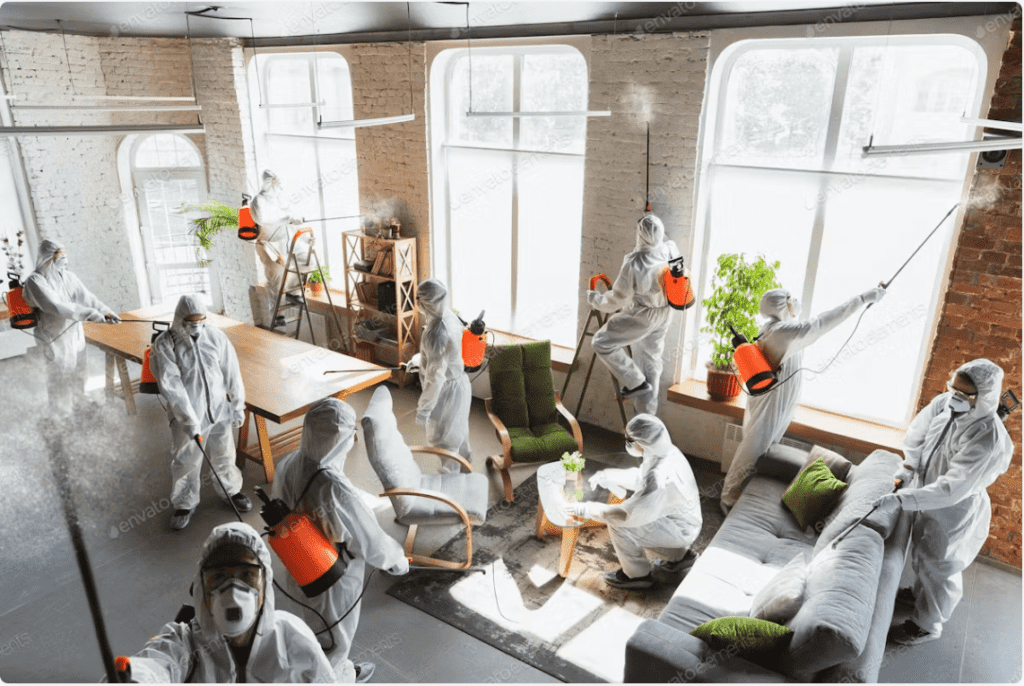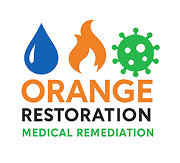Mold doesn’t just damage your walls or cause a musty smell. Mold impacts our health and can even make our bodies a host to mold spores and VOCs. -The Medically Sound Remediators
Why Identifying Mold Causes Is Critical for Health-Conscious Homes
For individuals with chronic conditions, immune sensitivities, or mold-related illnesses such as Chronic Inflammatory Response Syndrome (CIRS), it can seriously impact quality of life and long-term wellness. That’s why it’s no longer enough to simply clean up visible mold. At Orange Restoration, our approach is rooted in Medically Sound Remediation and Small Particle Cleaning, where identifying mold and eliminating the root causes of mold becomes the foundation of lasting health and home safety.
Practical Prevention Tips for Health-Conscious Homeowners
Before diving into the deeper environmental assessments and medically sound remediation strategies that form the core of our approach, it’s important to recognize some basic yet effective prevention steps that homeowners can implement immediately. These steps can help reduce mold risk and create a healthier living environment, especially for those who are medically sensitive or prone to mold-related symptoms.
Watch this short video to learn key mold prevention tips you can start using today. While professional assessment and remediation are essential for persistent or hidden mold issues, maintaining good habits around moisture control, ventilation, and cleanliness is the first line of defense against mold proliferation.
Dean’s Expertise in Identifying Mold Causes (Video Above)
Excess water and moisture are the primary catalysts, so the time to be aware of the possibility of mold growth is when you’ve experienced any type of water invasion. We’ve listed below the many ways that mold can enter and take hold in your home and pose mold related health risks.
Updated DIY Prevention Tips for Medically Sensitive Homes
- Control Humidity Levels: Aim to keep indoor humidity between 30-50%. Use a hygrometer to monitor, and consider dehumidifiers in moisture-prone areas like bathrooms and basements.
- Ventilate Effectively: Run exhaust fans during and after showers or cooking. Open windows when weather permits to promote air circulation and reduce stagnant moisture.
- Manage Damp Laundry and Fabrics: Avoid drying clothes indoors or leaving damp fabrics in enclosed spaces, as they can become breeding grounds for mold spores and microscopic particulates.
- Clean and Dry Bathroom Surfaces Regularly: Wipe down shower walls, sinks, and tub edges. Replace bath mats frequently and ensure they dry completely between uses.
- Use Safe Cleaning Agents: Incorporate natural cleaners like vinegar, hydrogen peroxide, or tea tree oil for mold deterrence. Avoid harsh chemicals that can exacerbate sensitivities.
These measures won’t replace professional remediation but help create a less hospitable environment for mold to grow, particularly important for those whose health depends on minimizing exposure.

Mold Needs the Right Conditions, And So Does Your Recovery
Mold thrives when it has a food source, moisture, oxygen, and darkness. These same conditions can silently persist inside homes, even when the surfaces look clean. Our work begins with identifying where those environmental triggers are hiding—because true remediation means going beyond what you can see.
Common Triggers We Help Identifying Mold
- Humidity and Poor Ventilation: Bathrooms, laundry rooms, and closets often trap moisture, especially in San Diego’s microclimates. Humidity above 55% can accelerate mold growth. Without proper airflow, even minor daily activities like showering or drying clothes indoors can raise levels enough to sustain active mold colonies.
Our solution: Hygrometer testing, ventilation analysis, and optional dehumidification plans tailored to the space and sensitivities of your household.
- Leaks and Condensation: Tiny, slow leaks in plumbing or roofing can remain unnoticed until mold odors or symptoms start. Condensation on cold surfaces (like walls or slab floors) can mimic the same effects.
Our Solution: We use moisture mapping and thermal imaging to trace the source, not just the damage.
- Flooding and Water Intrusion: Whether from a broken pipe, storm runoff, or gray water backflow, any flooding introduces contaminants that fuel microbial growth. Post-flood mold often appears weeks or even months after the event.
Our Answer: For medically vulnerable households, we employ post-flood containment, HEPA air scrubbing, and CIRS-informed cleanup protocols.
- Inadequate Drying and Standing Water: Crawl spaces and basements can hold moisture long after rain or irrigation events. Foundation leaks and poor drainage funnel water under your home, creating persistent mold risks.
Our Recommendation: We may recommend moisture barrier installation, drainage redirection, and subfloor drying techniques that prevent particle aerosolization.
- Clothing and Fabric Storage: Leaving damp towels, swimsuits, or laundry in enclosed spaces, even for a day or two, can invite mold. Closet mold from forgotten gym bags or fabric bins is more common than most realize.
These soft goods can harbor small particles long after visible mold is gone, so we often include soft material protocols and laundering guidance as part of medically sound remediation.
Mold Identification Is Only the Beginning
At Orange Restoration, identifying the source is step one. But how we clean and restore is what sets us apart. Our medically informed methods go beyond typical contractor cleanup jobs. Every remediation plan is designed to prevent cross-contamination, reduce biotoxin load, and restore air quality for sensitive individuals.
Health Symptoms Help Identifying Mold that is Hidden
Your body can be the first indicator that mold is present, even before you see visible signs. Many of our clients contact us not because of a stain on the ceiling, but because something simply “feels off” in their environment, often reflected in lingering health symptoms that worsen at home and improve when they leave.
Common mold-related symptoms can include:
- Persistent sinus congestion or “mystery” allergies
- Chronic fatigue, especially after being indoors
- Frequent headaches or brain fog
- Skin irritation or unexplained rashes
- Shortness of breath, cough, or wheezing
- Sleep disruption or night sweats
- Eye irritation or watery eyes
- Feeling anxious or emotionally unregulated in certain rooms
- Increased reactivity to scents or chemicals
Conditions Are key to Identifying Mold Causes
Mold needs the right conditions to grow and spread throughout your home. All it needs are a food source, darkness, heat source, oxygen, water, and very little time. That’s why, once some mold is detected, it is extremely important to deal with it before it gets worse!
Sometimes mold can be hidden in your closet, but we are here to find it and fix it like before you had the mold problem. Take a look at these before and after mold remediation photos.

However you’re Identifying Mold, it is Imperative for your Family’s Health to remove it!
If you or your family experience any of these and they seem to correlate with being at home (or even a specific room), it’s worth investigating mold as a hidden trigger, especially if you’ve had prior water damage, known leaks, or poor ventilation.
In our medically sound remediation process, we often consult with clients who are suffering from Chronic Inflammatory Response Syndrome (CIRS) or other mold-related conditions. Many of them went years without a clear diagnosis, and the environment played a larger role than anyone initially realized.
By integrating environmental assessments with symptom tracking, we help uncover the root causes behind recurring mold, mysterious symptoms, or lingering effects from past water damage, guiding you toward the most appropriate and medically sound path forward.
Talk to Our Team Today
We work with health-conscious homeowners, physicians, and CIRS-aware clients throughout the region. Contact us today to schedule an inspection or to learn more about our science-based mold identification and remediation services. We are also capable of serving as mold consultants or expert witnesses in mold cases.
We’ll help you breathe easier, starting at the source.
If you suspect your health is being impacted by your environment, don’t wait for mold to become visible. Our team is here to help with diagnostics and medically important remediation strategies. -The Medically Sound Remediators
